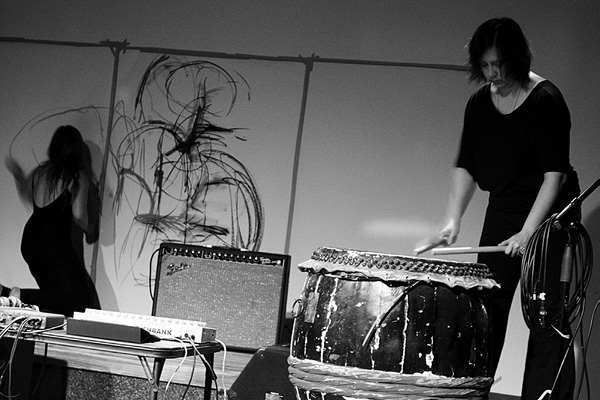
THE QUICKEST PATH TO EARTH
first performed on February 16, 2013
Mobius, Inc., Cambridge, MA
performed twice in 2013
CLARA KEBABIAN / SARAH VALERI
Boston, MA / Brooklyn, NY
130220195s130220195a130220195r130220195a130220195h130220195r130220195e130220195n130220195e130220195e130220195v130220195a130220195l130220195e130220195r130220195i130220195@130220195g130220195m130220195a130220195i130220195l130220195.130220195c130220195o130220195m130220195 130220195/130220195 130220195c130220195l130220195a130220195r130220195a130220195.130220195k130220195e130220195b130220195a130220195b130220195i130220195a130220195n130220195@130220195g130220195m130220195a130220195i130220195l130220195.130220195c130220195o130220195m
facebook.com/TheQuickestPathtoEarth
THE QUICKEST PATH TO EARTH
CLARA KEBABIAN / SARAH VALERI
“The Quickest Path to Earth” is a physical translation of sound into movement and line in real time. Simply put, Clara improvises music and I draw a translation. We hope these vibrations and their left behind forms can offer a sort of archaeology of the sound, a study of sensation made into movement and metaphor somewhere in the body.
I unrolled yards of paper over the floor and pinned them as well as I could to the black wall. Clara sat cross legged before the back wall, checking each of her cable connections amidst a collection of violins, electric violins, guitars, pedals, drum recordings and mics. Dressed in black, she and her equipment were almost part of the landscape, except for the brilliant green violin. With the paper fixed, I scattered pastel sticks in black, blues, yellows and reds along the floor so that I could reach them from anywhere while I was drawing. I was happy we could prepare the equipment in full view. The physical construction seemed to provide a focus on the materials and the mundane tasks that support life rather than a shared illusion.
As I listen to the video excerpts, I so wish we had a full recording of Clara’s composition. I cannot recognize it from this moment in time. I remember low, ropy violin, atonal chords, odd sharps and notes that passed over each other like people in a crowd making contact only once in their lives. Lovely and unknown. I drew in slow circles, balanced on my knees or in fighting stance. I would hear a note as gentle, but as I drew I felt the vibrations become more rugged, dark. Without any sense of pattern in the music, I would fall into one note and, in distress, forget how long I had been hearing the sound, wondering when it arrived and how long I must host it. I was in a state of complete dislocation and could not remember how many minutes I had been drawing the line, what sound came before, or how long the people, silent, had been watching. Sweating and tiring, I held on to the passage of the line to orient myself. I did feel as if I were in space, completely without direction or time. When Clara’s music slowed to silence, I let myself sink, relieved to hear shuffling and whispers. People came to huddle close over the drawings. Stories were made to understand them.